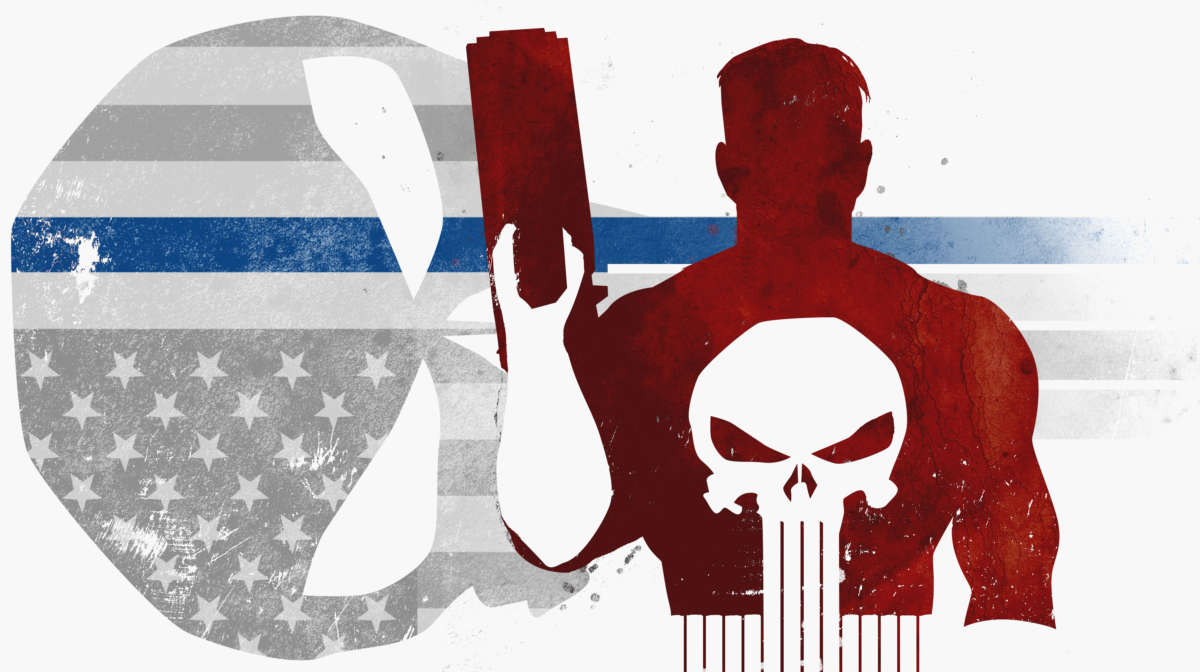On February 1, 1974, Francis “Frank” Castle made his debut as a fictional character in the pages of The Amazing Spider-Man #129. Gerry Conway, the writer, had initially pitched the idea of the misguided antihero as a throwaway villain. “The Assassin,” as Conway called Castle, was an ex-soldier bent on revenge, wearing a small totenkopf on his breast as the badge of his “war on crime.” Artist John Romita Sr. reworked the symbol into a stylized version of the Waffen S.S. skull before publication. Stan Lee ‒ the creator of hundreds of famous Marvel heroes ‒ changed the character’s name from “The Assassin” to “the Punisher.”

For the next decade, Frank Castle ‒ a.k.a the Punisher ‒ bounced from comic to comic. He was a mainstay in The Amazing Spider-Man and frequently crossed over into other popular lines like Daredevil and Captain America. During that time, he was given clearer motivations, and a tragic backstory. Unlike the rest of Marvel’s A-listers, though, Frank killed his enemies. As the writer for a failed 1976 solo-series put it:
In many ways, the Punisher is an unusual choice for a lead character. He’s fascinating, yet at the same time, repelling. In my own head, I think he’s the dark side of us all. He’s the part that screams in rage at the million frustrations and injustices, major and minor, plaguing the average person in the twentieth century. He’s the violent part of us that yearns to do something about it. Quickly. Simply. Finally. Yet, we know we can’t. If everyone was the Punisher, we’d have anarchy; chaos. A solution as bad, if not worse, than any of the problems. The vigilante as hero is a concept that’s been with us a long time. It’s been a favorite one in comics, and in pulp fiction prior to that. The Punisher carries the tradition to its logical – and deadly – extreme. In doing so, does he become as bad as those he sets himself against? I think that’s part of the character’s fascination, and I think it’s an aspect that, given time and future issues, we’ll certainly try to explore.
There would be no future issues for Frank Castle ‒ not in that particular series anyways. He returned to the pages of Spider-Man and Daredevil and Captain America for the rest of the ’70s and early ’80s. There, he was invariably used as a foil to the more pure-hearted heroes. Sometimes he would team up with them to defeat a common foe. More often they would fight over their differing views of justice. He was always a cautionary tale about what happens when someone decides that the ends justify the means.
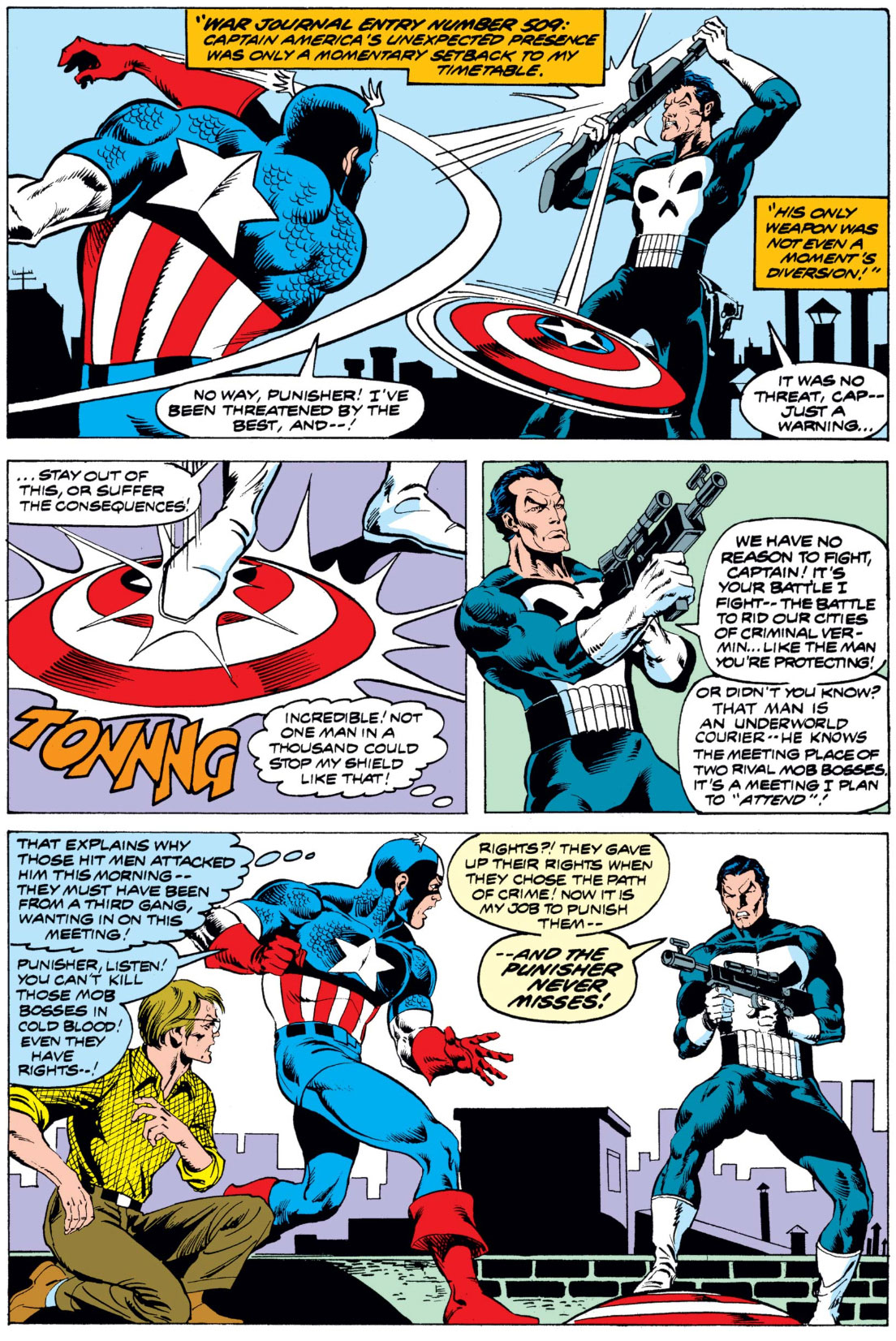
On October 14, 1982, Ronald Reagan declared a new “war on drugs.” In October of 1984, he signed the Comprehensive Crime Control Act into law, helping to usher in a new era of civil asset forfeiture and mandatory minimums. A month later, he was reelected in a historic landslide, and set about supporting a number of murderous regimes in Latin America. It was during this time that, on January 1, 1986, Frank Castle was given another shot at a solo-series. As Gerry Conway would later say:
You had at that time a national government that was very aggressive. We had this notion that as a nation we needed to break the rules. In that era, the Punisher was able to take on a “heroic” mantle, [rather] than being an anti-hero that was frowned upon. People were prepared [to] embrace him. Readers embraced him as an actual hero because of what was going on.
The five-issue limited run was a massive success, and Marvel immediately began working on a monthly title behind the scenes. In November 1986, news of the Iran-Contra Affair broke. The Punisher would ultimately make its debut in the midst of the ensuing, widely televised congressional hearings.
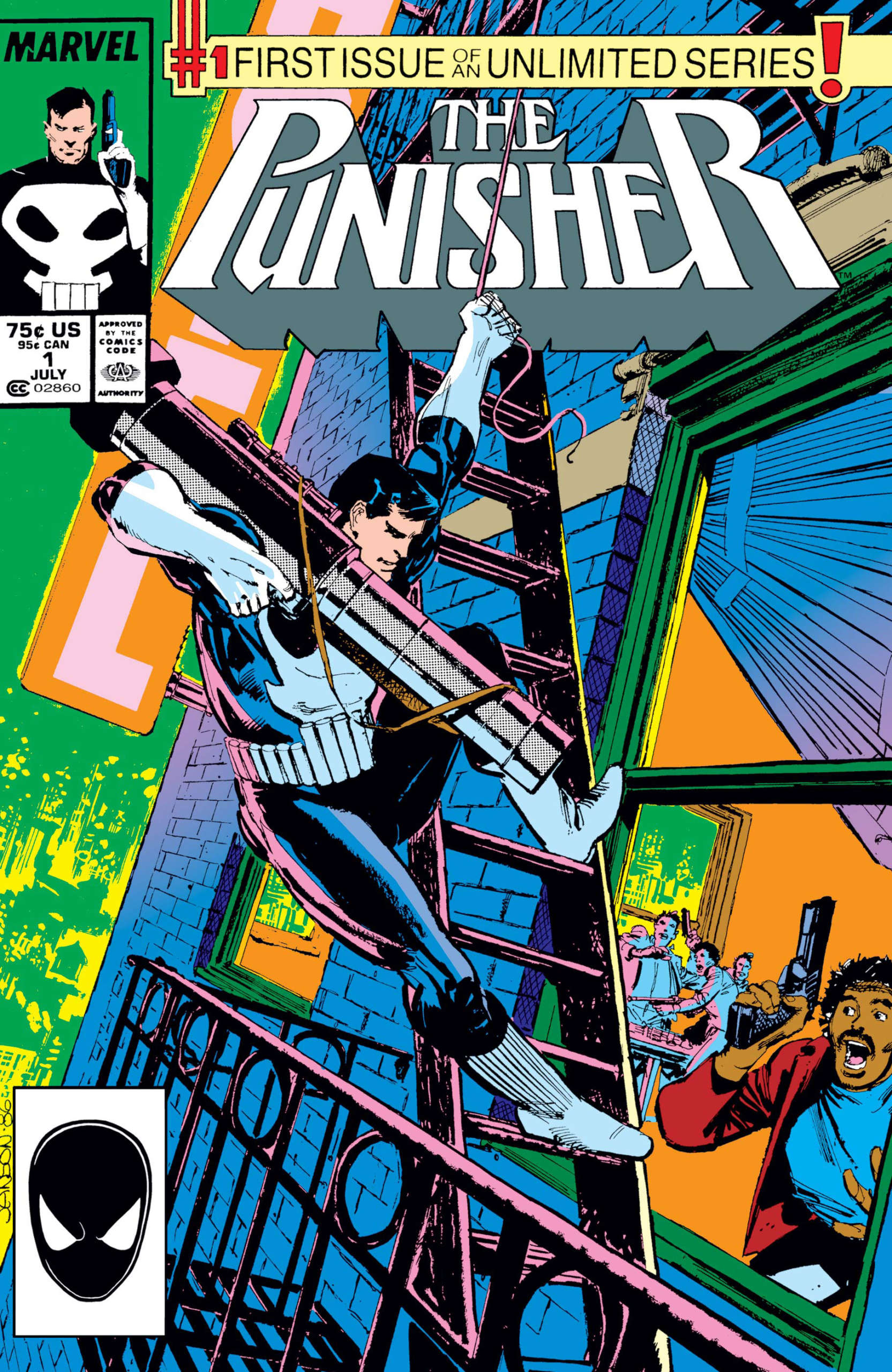
As Americans learned that their government had conspired with drug lords to sell cocaine in U.S. cities, Frank was knocking over “crack houses” in Spanish Harlem with a bazooka. When he follows the chain of supply, it doesn’t lead him to the CIA, but instead to Bolivia. There he encounters a local military owned by the narco-traffickers, and no sign of U.S. involvement to be found. He promptly kills dozens of Latinos, burns their processing plant and takes the millions of dollars they stole back to New York, to fund his future operations.
The Punisher was fiction, of course, but it was a particular kind of right-wing fiction that ran directly opposite reality. Despite that, like its predecessor, the series was wildly successful. Marvel commissioned two spin-offs ‒ Punisher War Journal and The Punisher War Zone ‒ and together the three series would produce 223 issues over the next eight years. For the better part of a decade, the trend of tacitly commenting upon current events continued.
On the anniversary of Rodney King’s beating by the Los Angeles Police Department, Frank Castle ‒ in March 1992 ‒ put on blackface and lectured prominent Black superhero Luke Cage about “Black-on-Black” crime. Two months after the Oklahoma City bombing, Frank Castle appropriated a neo-Nazi weapons cache and used it to kill civilians in Central Park.
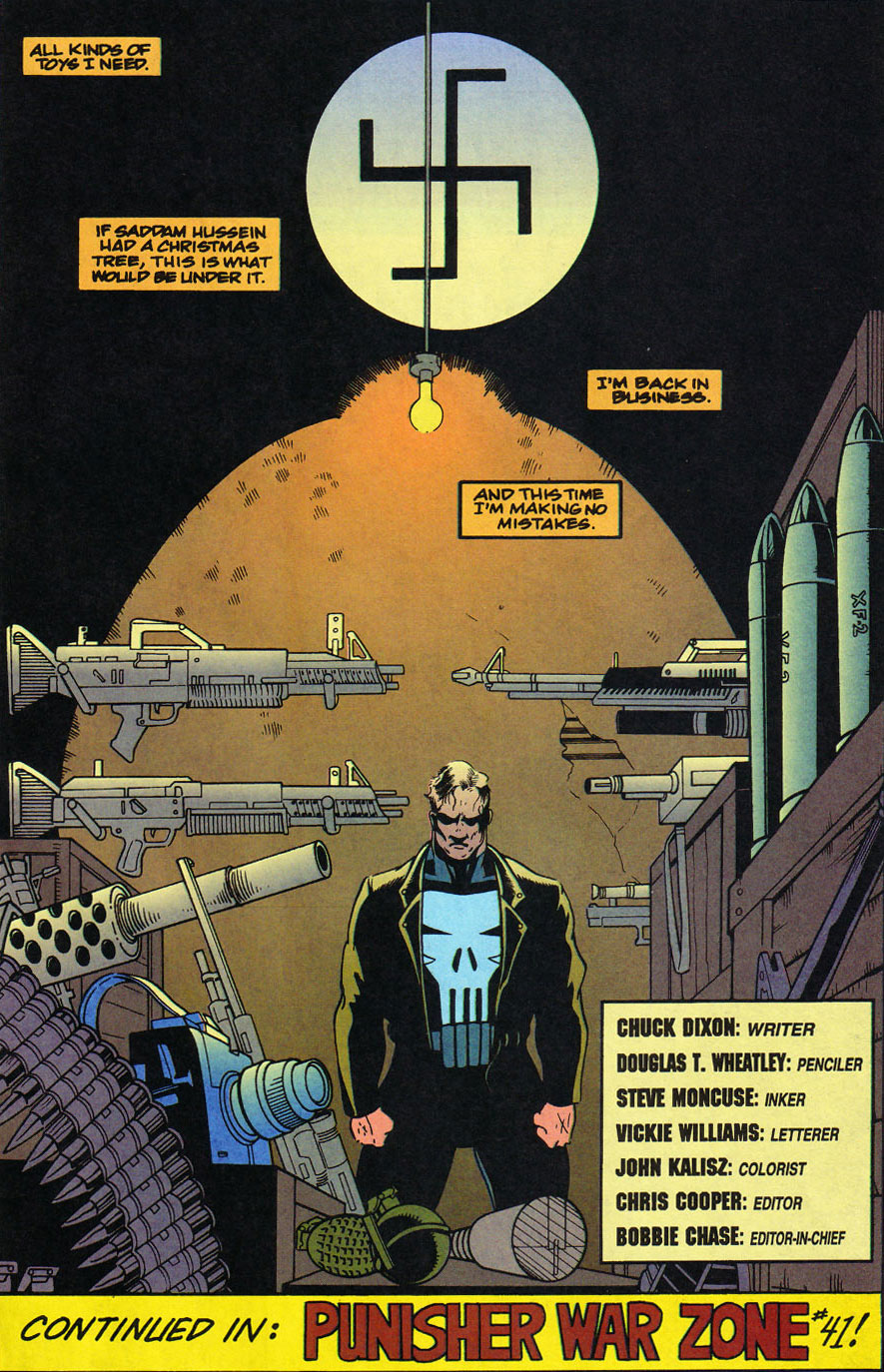
Six months after the 102nd Congress had been sworn-in ‒ marking Democratic control of the House for 36 years, and of the Senate for four ‒ Frank Castle went on a rant while battling Soviet partisans in Siberia:
When I started I thought I’d make a difference. Wipe out organized crime — hah! The real enemy’s in Washington! Liberal Democrats have sold this country down the river! You know what would make a difference? Blowing away a few crooked congressmen… yeah… I’d even kill a few Republicans just to show I’m bi-partisan…
The list goes on.
In April 2000, Irish writer Garth Ennis was hired to bring the Punisher into a new millennium. His take on Frank Castle redefined the character, and the subsequent Punisher MAX series was the one that soldiers would carry into Iraq and Afghanistan. While deployed, U.S. troops made heavy use of the symbol to assert American dominance. Soldiers would spray-paint the totenkopf on their weapons, armor, helmets and vehicles. “We spray-painted it on every building or wall we could,” one veteran recalled. “We wanted people to know, [w]e’re here and we want to fuck with you.” The Punisher skull became so prevalent that it was adopted by various militias in the region, and can still be found there to this day.
As with its predecessors, Punisher MAX relied heavily on racist caricatures, although now they were generally anti-Black instead of anti-Latino. The glorified violence of the series became disproportionately focused on “homeboys,” as Castle calls them. Despite ending in 2009, Punisher MAX is still the most beloved iteration of the character among police.
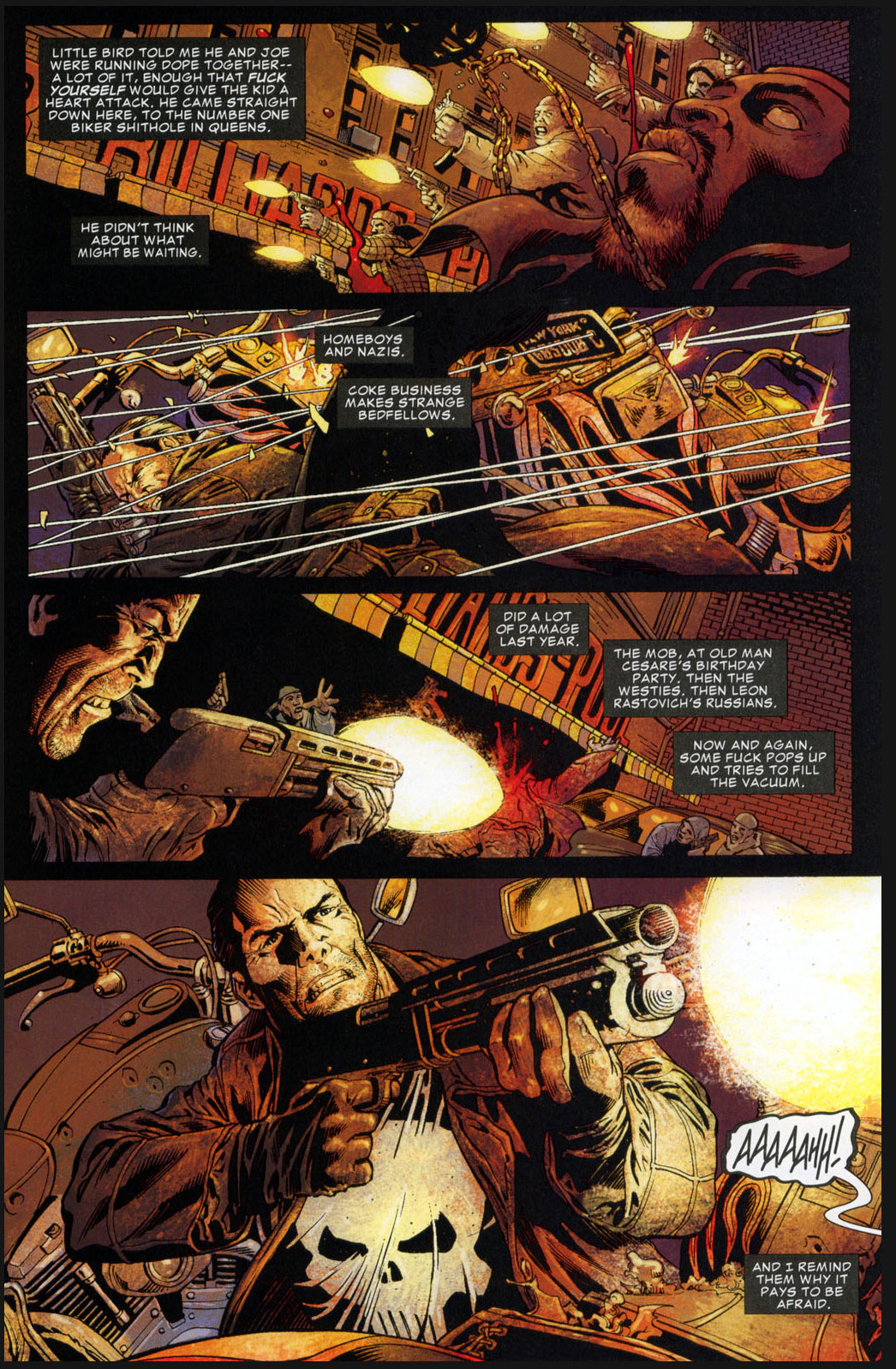
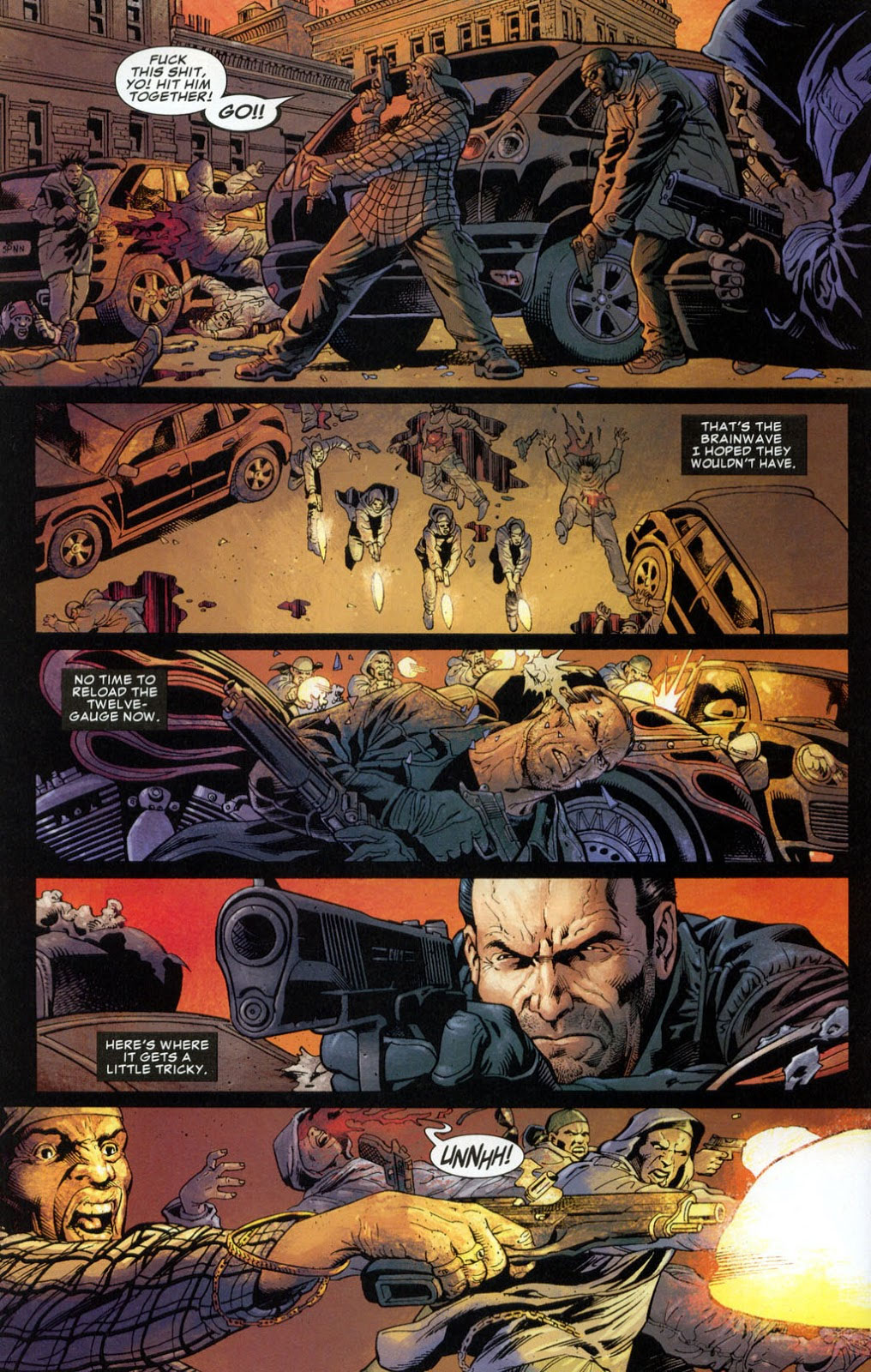
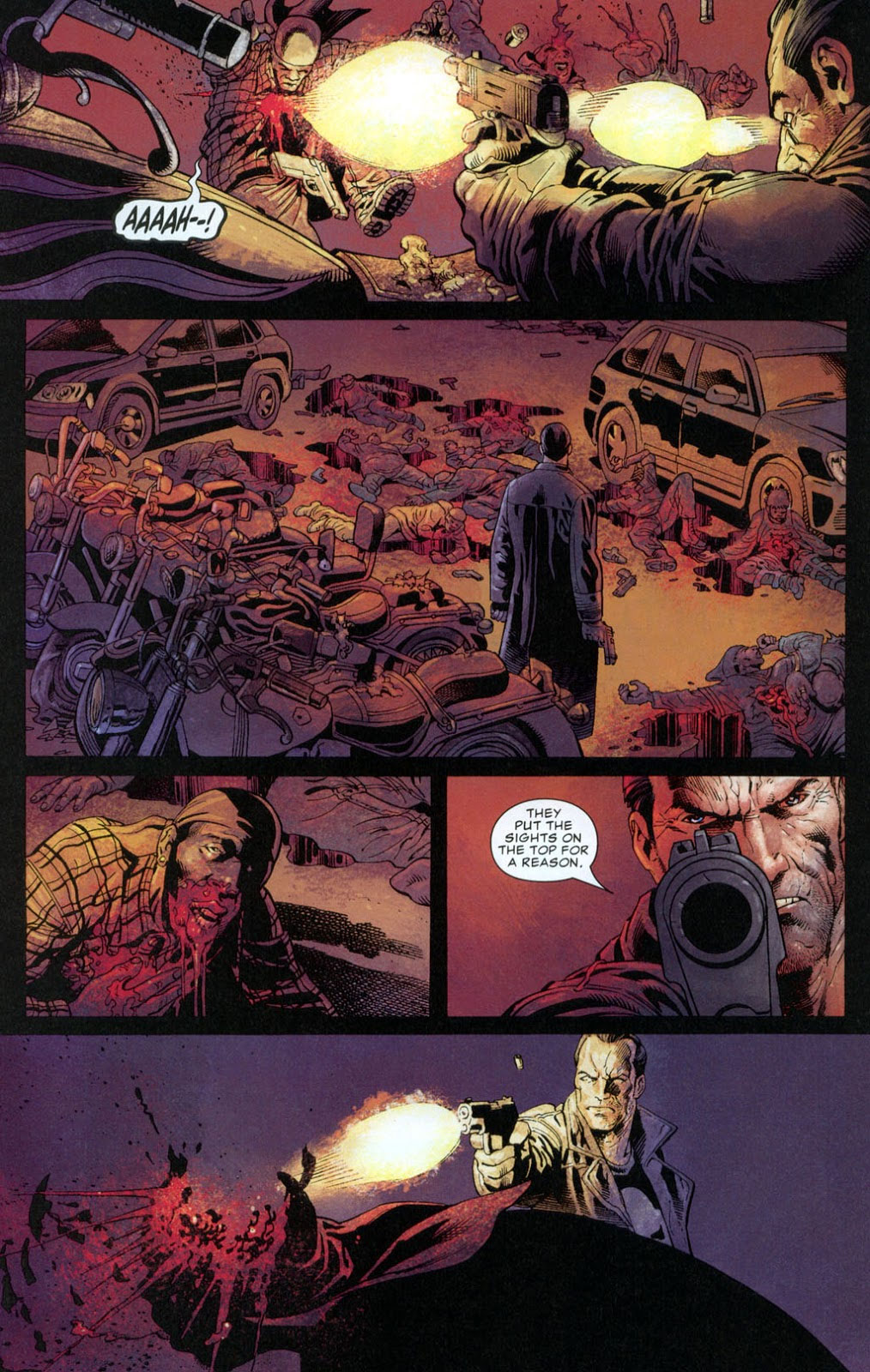
On October 4, 2004 ‒ nine months after the premiere of Punisher MAX ‒ Frank Jude Jr. was beaten by off-duty officers in Milwaukee, Wisconsin, while trying to leave a party. The officers responsible, it was later discovered, were part of a group within the Milwaukee Police Department called “The Punishers.” The Punishers would don gloves and caps embossed with Frank Castle’s skull symbol before going on patrol in the city’s predominantly Black neighborhood, where they engaged in “vigilante-style activity.”
In December 2014, a group of current and former police officers created “Blue Lives Matter.” The private media company had the explicit goal of pushing back against the then-nascent Black Lives Matter movement. They lost no time in making Frank Castle the mascot for their official Facebook page, and promoting the now-ubiquitous “Thin Blue Line Punisher.”
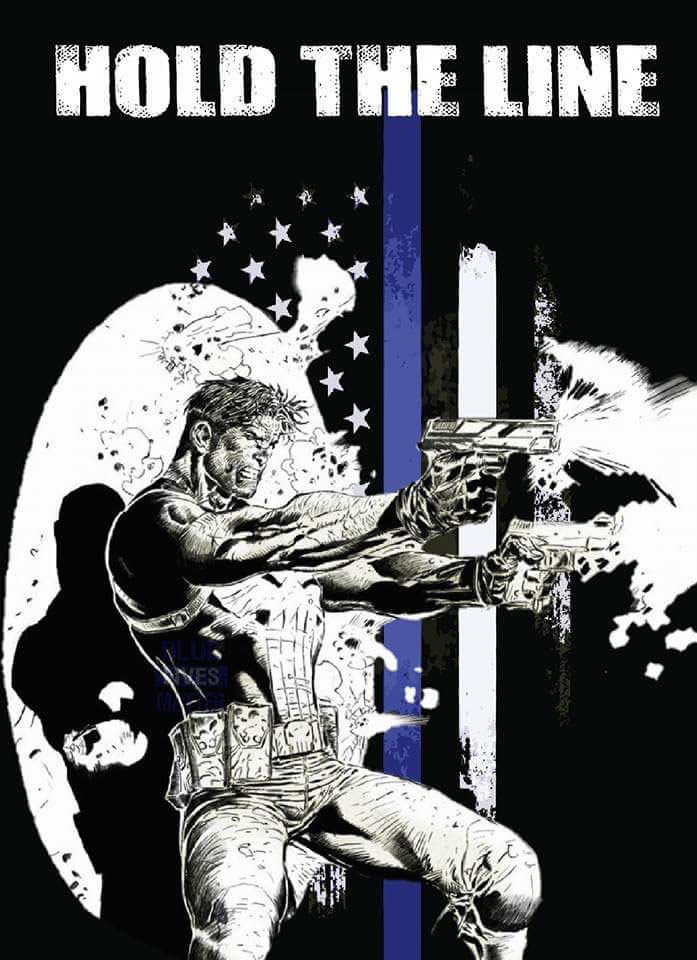
On August 11, 2017, white supremacists held a rally in Charlottesville, Virgina. Amid the violent attacks that resulted in one death and dozens of injuries, a contingent of fascists was spotted with the Punisher logo painted on their shields.
On June 4, 2019, it was revealed that 22 officers in the St. Louis Police Department had been sharing racist, sexist and anti-Muslim posts on Facebook ‒ among them, the Punisher skull. In response to the officers’ suspension, the president of the St. Louis Police union issued a statement, calling on all supporters to change their profile pictures to the “Blue Line Punisher symbol” in protest.
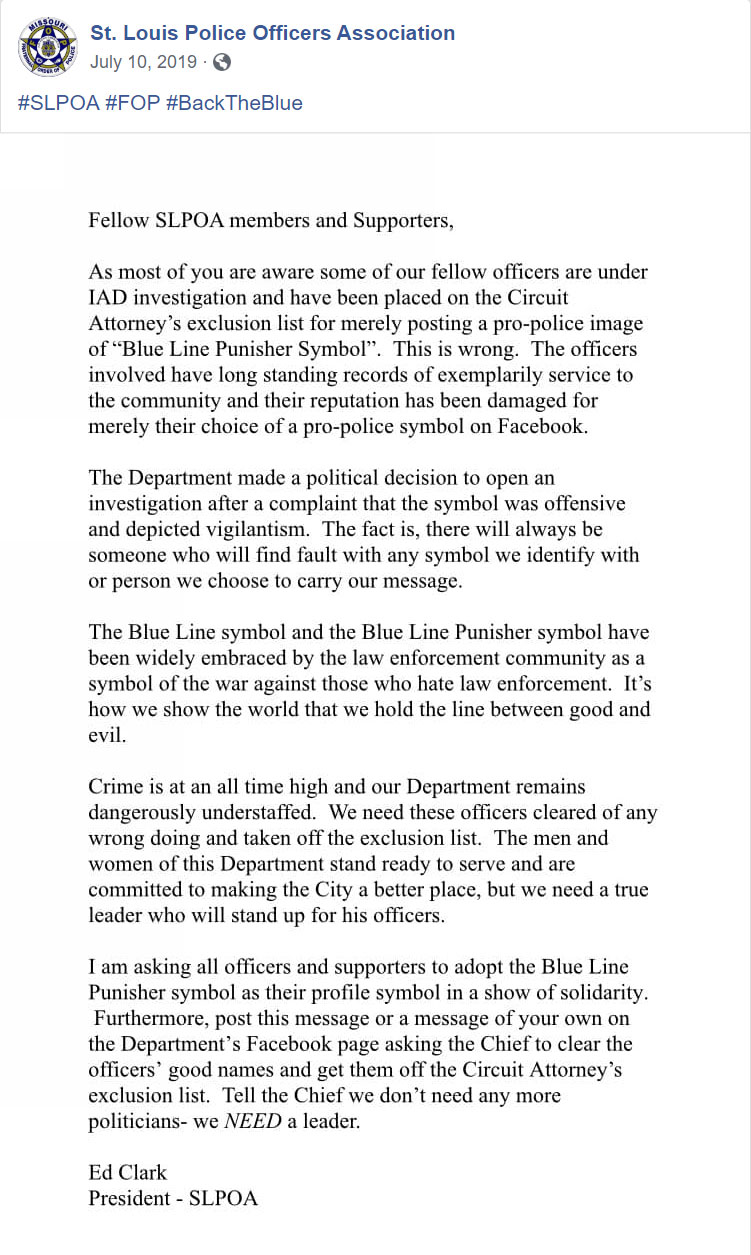
Most recently, Frank Castle’s totenkopf has become an integral part of the pushback against protests over the murders of George Floyd and Breonna Taylor. Police have been seen across the country wearing variations of the symbol, frequently while beating and tear-gassing peaceful protesters.
Over the years, Marvel has made various attempts to save Frank Castle’s image ‒ from having him kill a lot of Nazis after Charlottesville to berating cops that use his symbol. Gerry Conway has criticized police use of the totenkopf and started a “Skulls for Justice” campaign to rebrand the logo. A few comic book creators are even urging Disney to sue police departments that use the skull. All these efforts have failed.
Frank Castle was created as an antihero. He was a villain and a cautionary tale. Over time that was forgotten. From the moment he was given his own series, it was used to push reactionary ideas and dangerous fiction. Not long afterward it began to inspire violent action. In the early 2000s the Punisher was chosen by U.S. forces to represent U.S. forces in Iraq and Afghanistan. It is no mistake that numerous war crimes were committed in the region while the Punisher was used to convey that “[w]e’re here and we want to fuck with you.” In the 2010s, Frank Castle jumped back and forth between fascist militias and police unions, used equally to justify hateful messages on Facebook and attacks on unarmed protesters. As unidentified federal agents begin abducting Americans in 2020, the line between the two camps has blurred even more. This development came as a shock to many, but really it is the only logical conclusion to the cult of death that Frank Castle has inspired.
The Punisher skull is a symbol that police have chosen to associate themselves with repeatedly and voluntarily. Even if the paramilitaries on the streets of Portland aren’t literally wearing the totenkopf ‒ and there’s still time for it to make an appearance ‒ they are acting in accordance with what it has come to represent. Secret police, unreported arrests, blacksites ‒ these are the tactics of Nazis and the U.S. in the Middle East. Current events are only one in a long line of regressive uses that the Punisher skull has been put to. Those who use the symbol to condone brutality do so not despite its meaning, but because of it. There is nothing left to reclaim in Frank Castle. The Punisher skull is a hate symbol, and has been for some time. It’s time we treated it like one.
Join us in defending the truth before it’s too late
The future of independent journalism is uncertain, and the consequences of losing it are too grave to ignore. To ensure Truthout remains safe, strong, and free, we need to raise $29,000 in the next 36 hours. Every dollar raised goes directly toward the costs of producing news you can trust.
Please give what you can — because by supporting us with a tax-deductible donation, you’re not just preserving a source of news, you’re helping to safeguard what’s left of our democracy.
